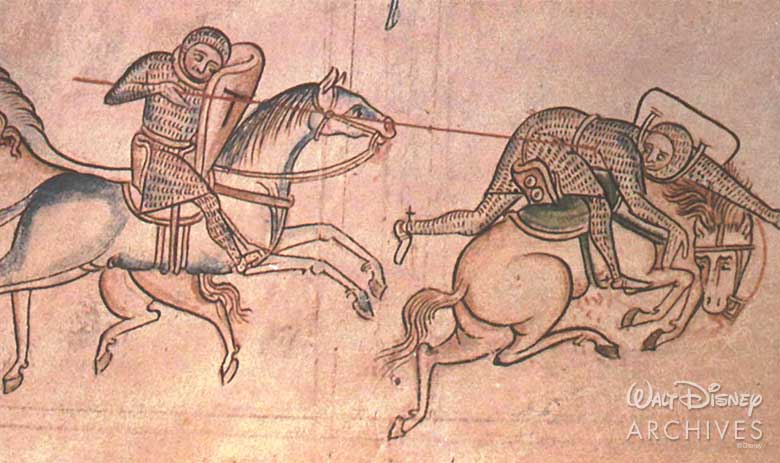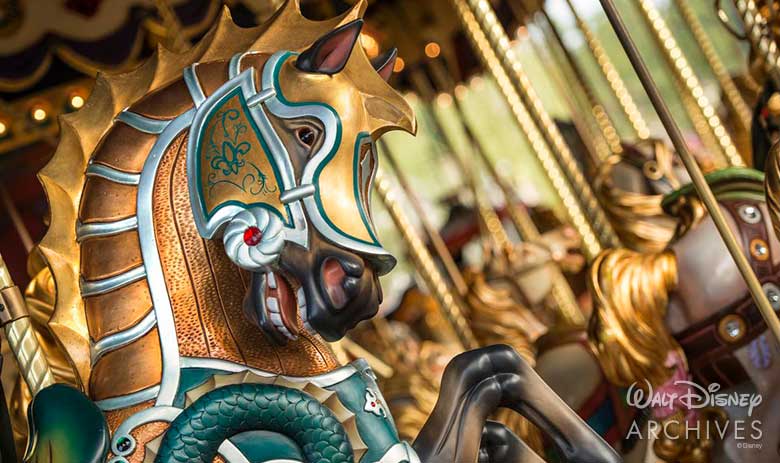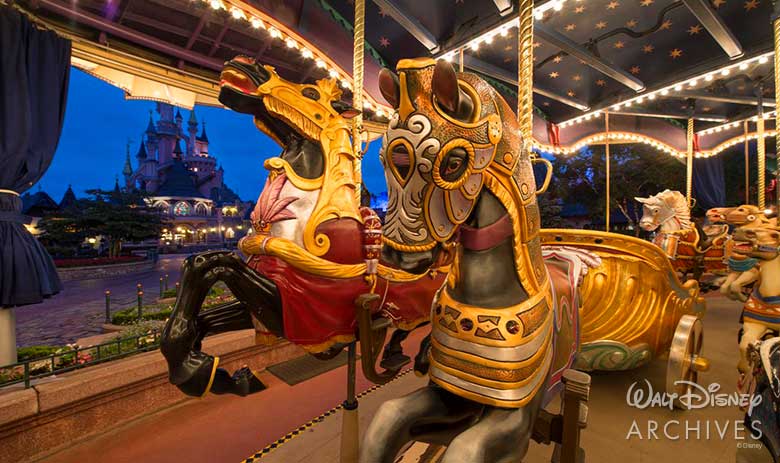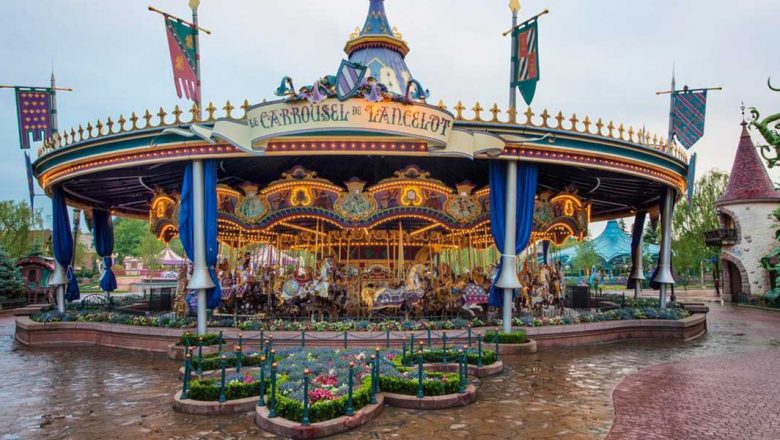By Becky Cline
Every Disney fan knows that Disneyland was built on orange groves in Anaheim, California, and that Walt Disney World Resort was constructed amidst the undeveloped everglades of central Florida. Many know that Tokyo Disneyland Resort and Hong Kong Disneyland Resorts were built on land reclaimed from the sea, and that Shanghai Disneyland was built on undeveloped land in the Pudong district of Shanghai. But what many people don’t know is that Disneyland Paris sits on a historic plain that was once one of the most popular places in Europe for medieval entertainment, more than 800 years before.

During the medieval period, the field of Lagny-sur-Marne was the most popular place in France for jousting tournaments. The field at Lagny was located east of Paris on the east bank of the River Marne, bordering the region of Champagne. Disneyland Paris now sits on a portion of that vast field.
The largest and most spectacular of all medieval tournaments ever held was hosted there in November 1179, by King Louis VII of France, to celebrate the coronation of his nephew and heir—Philip. (It was a tradition in that era that a king would sometimes crown his heir during his own lifetime.) On All Saints Day 1179, the nearly 15-year-old Philip was anointed and crowned at Reims Cathedral and following the ceremonies, more than 3,000 men—noble knights and their men—met at Lagny-sur-Marne for what might be considered the “Super Bowl” of the Middle Ages.

Today, we think of a tournament as a jousting match with individual knights riding with lances to meet each other on a field of single combat, and this was indeed a component of the tournament—but it was never its main feature. The “Melee” was the focus of the event, and consisted of a mock battle where two teams of mounted knights fought one another on a very large “battlefield.” The object was to capture opposing knights so that they could be ransomed, (a very profitable business for skilled knights such as these).
Notable participants from all over what is now France attended the coronation and tournament in 1179 as well as team of luminaries from the court of England. Led by England’s own 24-year-old “young king” Henry Plantagenet (the eldest son of King Henry II) the English team of knights also included his brothers, Richard, Duke of Acquitaine (the future King Richard “The Lionheart”) and Geoffrey, Duke of Brittany, as well as the man many refer to as the greatest knight who ever lived, William Marshal, Earl of Pembroke. Also participating in the coronation and tournament were the Count of Flanders, the Duke of Burgundy, David Huntington (brother of the King of Scotland), and many others, both French and English.
Though the tournament was a friendly “mock” combat, the melees were very dangerous events, and there was the real possibility that a knight could be seriously injured or even killed. On the day of the tournament the teams formed on each side of the field, lined up for the charge. At the signal, the lines rode at each other with their lances leveled. Those who were able to remain on horseback after that first charge, would turn about quickly and seek out knights to engage individually, hoping to capture them for ransom. Throughout the rest of the day, running battles spread over multiple miles until both sides were exhausted, or daylight faded away. The day then ended with a lavish banquet, entertainment, and the awarding of prizes. Following the Lagny tournament, great praise was heaped on the victorious William Marshal, who was lauded by the Young King Henry who nearly met disaster when his brother Geoffrey abandoned him to chase opponents for ransom. William Marshal and a knight named William de Preaux came to his rescue and even though his helmet was torn from his head, he was saved from capture.
We are fortunate enough to have a contemporary account of the famous tournament, described in detail by William Marshal’s own biographer.
There were to be seen banners unfurled, so many of them and of such diverse types that no man could make them out sufficiently to be able to describe them in detail. The entire field of combat was swarming with them, the plain so full of them that there was not an inch of ground to be seen.
I can tell you that that encounter was not a stealthy affair, indeed, there was great noise and tumult as all strove to deal mighty blows. There you would have heard such a great clash of lances, from which the splinters fell to the ground as the companies met and impeded the forward charge of the horses.
The throng across that plain was huge, with each company shouting out its battle cry. On all sides you would have seen horses running and sweating with their exertions. Every man strove hard and did all within his power to perform high deeds, for it is in such a situation that prowess is shown and displayed for all to see. It was a very fiercely fought contest, many were the feats of arms performed that day; the tournament was an exceedingly fine one.
My lord William the Marshal performed so many feats that … afterwards, the King, those who witnessed the event, and those who heard speak of it, said that never before had finer blows been witnessed from a single knight, or known of, as those dealt by the Marshal that day. The bravest amongst them gave him high praise for this.

So, the next time you take up the reins of your noble steed, ready to embark on an enchanting ride aboard Le Carrousel de Lancelot… don’t forget the dashing young King Henry and his valiant knight William Marshal, who gallantly defeated their adversaries on the field beneath your feet.



